The EW reading guide to Milestone’s classic Black superhero comics
Entertainment Weekly, Chancellor Agard , Christian Holub
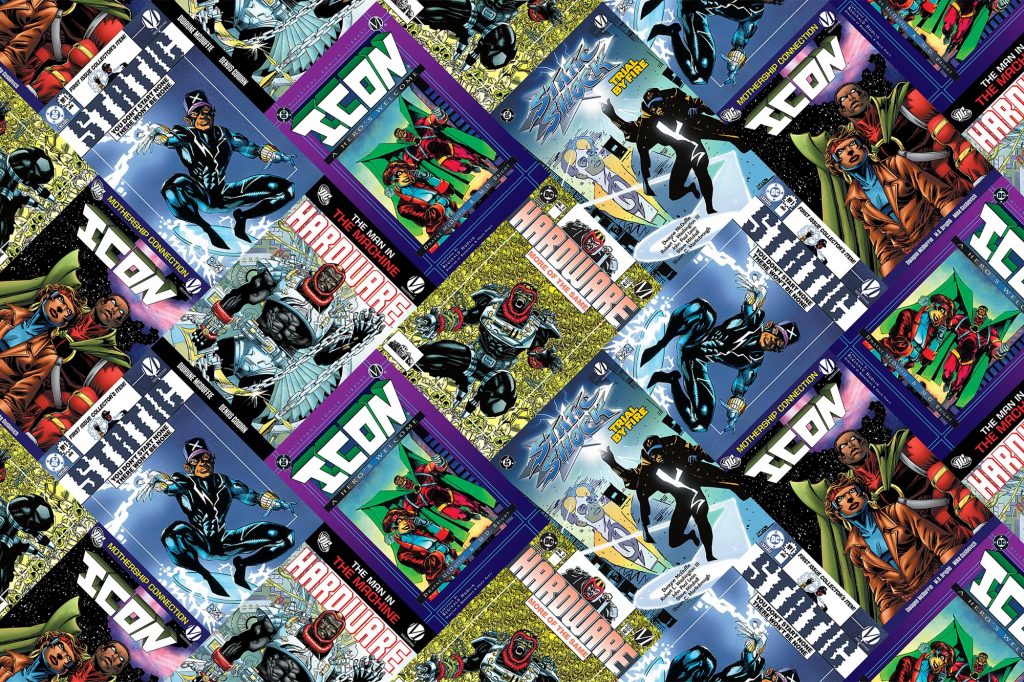
After all this time, there still aren’t enough Black superheroes. In recent years, major comic publishers like Marvel have experimented with promoting some of their Black characters to bigger roles (making Sam Wilson Captain America, for instance) but those changes often proved temporary and thus can’t compare to the power of creating whole new heroes. Milestone Media’s four-year run in the ’90s remains the benchmark for original Black crimefighters whose identities and backgrounds were central to their power, not coincidental. ’90s kids are probably familiar with Static Shock from his animated TV series, but there was also Icon and Rocket, who enhanced the traditional superhero/sidekick dynamic with Booker T. Washington/W.E.B. DuBois style debates about Black culture and responsibility, and Hardware, whose high-tech armor allowed him to actually channel his Black anger at oppressive society. Just as most Marvel heroes operate out of New York City, Milestone’s pantheon all fight to protect their city of Dakota.
Unfortunately, due to various legal issues, Milestone’s output remained tragically out of print for years despite its status as a subsidiary of DC Comics. But now things are finally turning a corner. At the virtual DC FanDome event last August, the publisher announced that Milestone would resume publishing in 2021 with several digital-first series. They also dropped a primer on the “Dakotaverse” called Milestone Returns #0, which is being re-released digitally on Feb. 26 with brand new content from the creative teams involved in the imprint’s relaunch.
At the same time, the classic Milestone runs have finally become available on digital comic services like Comixology and the new DC Universe Infinite. So, we at EW thought this would be the perfect time to put together a little reading guide to the past, present, and future of Milestone’s heroes. If you’ve never visited, allow us to welcome you to the city of Dakota. It has a lot to show you.
Icon: A Hero’s Welcome, written by Dwayne McDuffie and illustrated by M.D. Bright
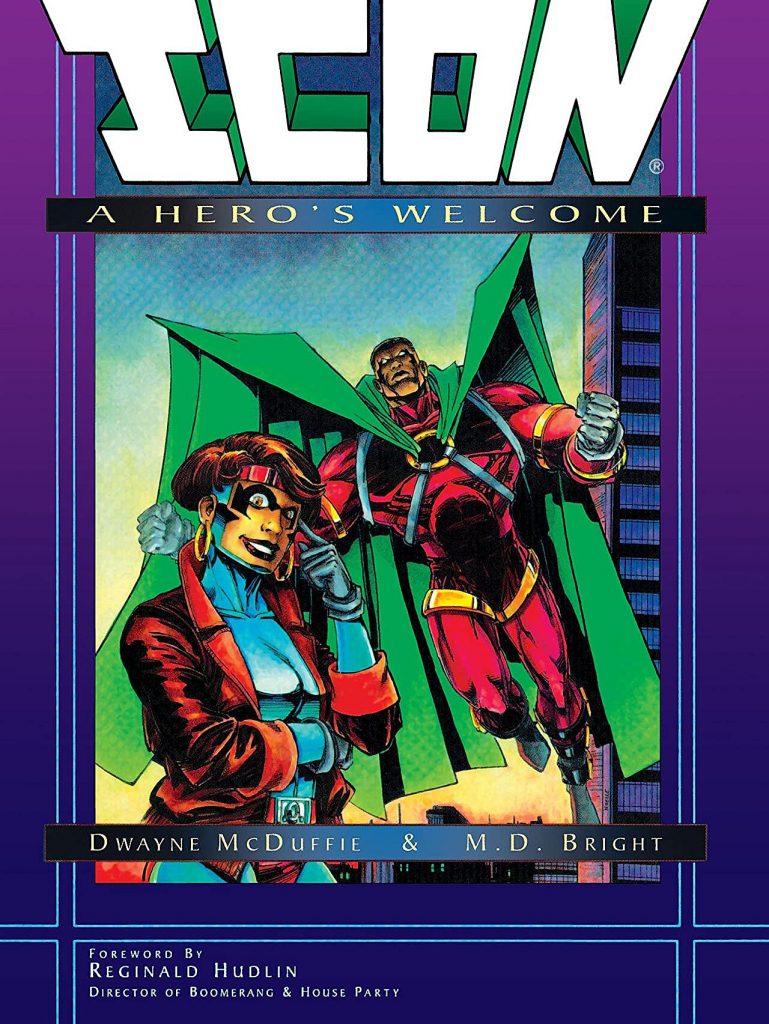
The concept: As we all know, Superman is a champion of good old American values because his alien rocketship crash-landed on a Kansas farm. Icon asks the thought-provoking question, what if a similar ship had instead crash-landed on a slave plantation in the South? The first human this alien ever encountered was a Black slave, so he modified his DNA to look like her. Flash forward a century, and that alien has grown into a successful lawyer going by the name Augustus Freeman. Despite his superhuman powers (including flight, strength, and near-invulnerability), Augustus looks down on the destitute Black citizens of Dakota, invoking Booker T. Washington-type slogans about how they should pull themselves up by their bootstraps. But then a young woman named Raquel Ervin comes into his life, and convinces him to use his powers for the benefit of the people and protect them as a living inspiration, an Icon. In return, Icon gives her a high-tech belt that allows her to fly and project forcefields, and she takes on the name Rocket as his faithful (but never obedient) sidekick.
Why you should read it: Icon was one of Milestone’s flagship books not just because it features the strongest character, but because it is the most thoughtful exploration of what a Black superhero comic could look like. Blackness is not a monolith in Icon, and the characters speak to each other across chasms of generation, gender, and life experience. The first few issues find Icon and Rocket racing to rescue Dakota’s Black female Mayor from an attacker holding her hostage in her office, but when they get there they learn the attacker has a very serious grievance (he says the mayor ordered an experimental tear gas to be fired at protesters, which turned him and many others into monsters) and Icon swears he will find out the truth. In another issue, Rocket reveals her pregnancy, and she and several other characters spend the issue having smart, empathetic, no-holds-barred discussions about the merits and drawbacks of abortion. Icon was a smart, entertaining book next to which many superhero comics seem pale and ignorant.
What to look for next: Icon is the luckiest of these Milestone books we’re discussing, because it alone has a second volume available digitally right now. Icon Vol. 2 has the subtitle The Mothership Connection, after the 1972 Parliament album of the same name, firmly placing Icon in the proud lineage of Afrofuturist pop culture.
When it comes to other media, Icon and Rocket have both made appearances on DC’s Young Justice animated series (with Icon as a member of the Justice League and Rocket as part of the titular sidekick squad), though that show’s huge ensemble cast means you don’t get a ton of time with them.
Luckily, there are more Icon comics coming soon. A six-issue, digital-first Icon & Rocket series is planned to begin this June, with a thought-provoking story hook worthy of its predecessor: by actually stopping crime, the two heroes end up causing the collapse of the global economy!
Static: Trial by Fire, written by Dwayne McDuffie and Robert L. Washington III, with art by John Paul Leon
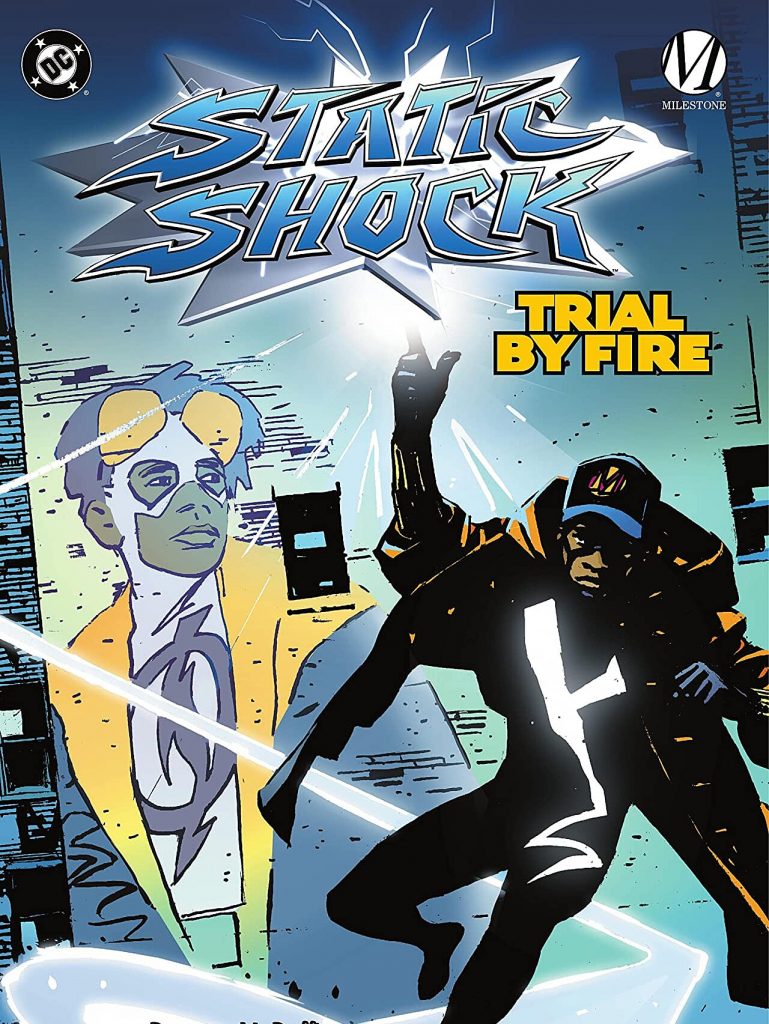
The concept: Like Icon, the young hero Static is a riff on a well-known superhero archetype, except the latter is more reminiscent of Peter Parker, a.k.a. Spider-Man. Static Shock: Trial By Fire introduces Virgil Hawkins, an awkward high schooler dealing with racist bullies, the pressures of gang life, girl problems, and a family’s high expectations. However, one night, Virgil gets caught in a chemical explosion called the Big Bang and gains electromagnetic powers, which he uses to defend the neighborhood from other metahumans created by the incident as the wisecracking hero Static.
Why you should read it: First, Static is probably the most recognizable hero from the Milestone universe thanks to the WB Animated series Static Shock, which ran for four seasons and featured both McDuffie and Cowan on the creative team. Beyond that, though, Static is just a really fun character. Issue #1 begins with an energetic action sequence that spotlights Virgil’s swagger as a hero, which immediately makes you root for him. Even though some of the slang and references are dated, Static’s quips will still make you laugh. That being said, the thing I love most about the book is how it comments on the pressures of masculinity, especially for young Black men. Unlike his peers, Virgil isn’t manly in the traditional sense or overtly tough, and many characters in these first four issues try to tell him how a man should behave. Thankfully, the series rejects the stereotypes and allows Virgil to be vulnerable, whether after an encounter with his bully-turned-nemesis or his hurt feelings when the girl he’s crushing on doesn’t return his feelings.
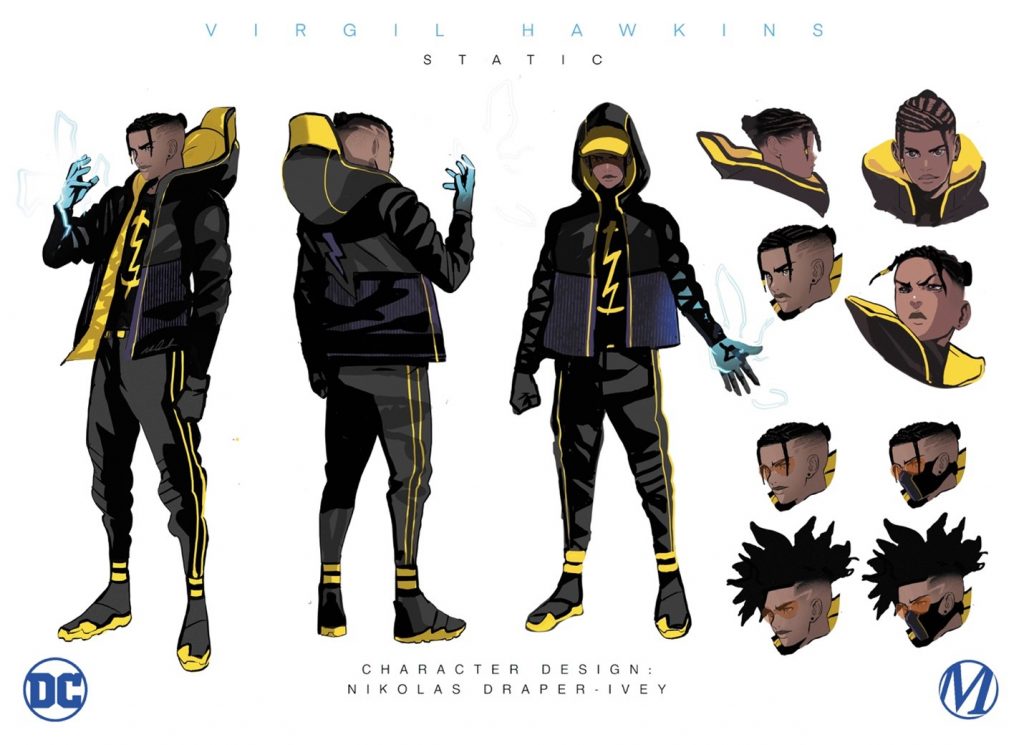
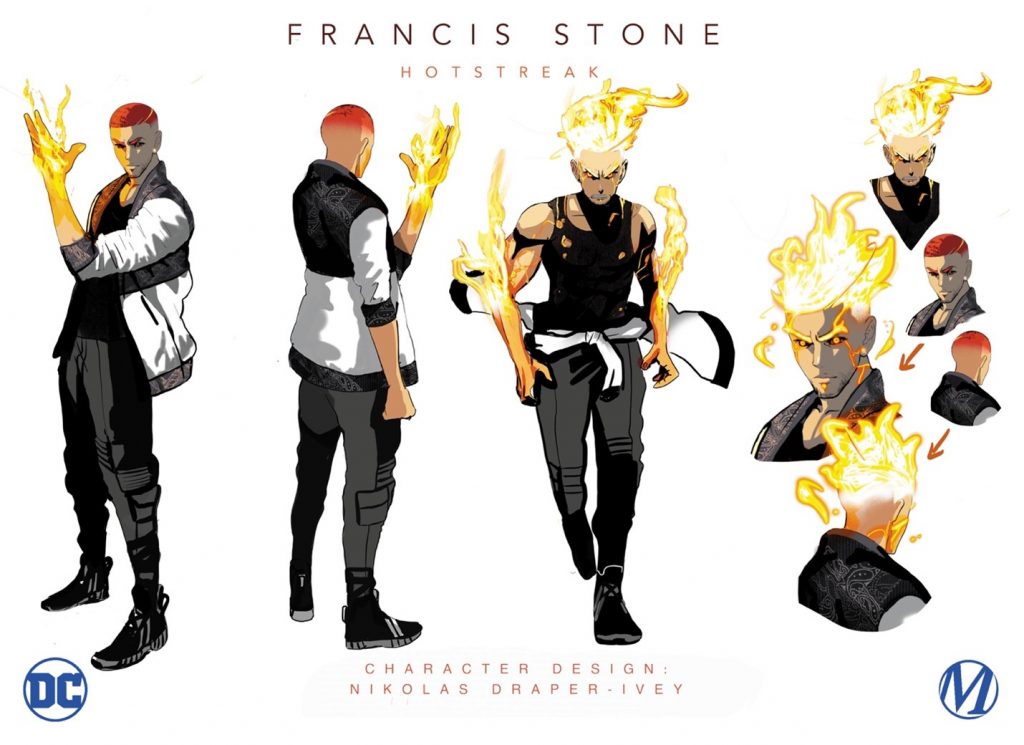
What to look for next: If you’re looking for more Static, check out McDuffie and company’s return to the character in 2000’s Static Shock: Rebirth of Cool and watch Static Shock on HBO Max (The animated version of the character also makes an appearance on Justice League Unlimited). Both of those will hold you over until the boisterous hero makes his long-awaited return in a new six-issue digital-first series arriving in April as part of DC’s relaunch of Milestone, which updates the Big Bang so that it occurred during anti-police brutality protests. Following the metahuman-birthing incident, Virgil “finds himself caught between an over-militarized police response to Black kids getting special abilities and some of those kids who are using those powers in dangerous and destructive ways.” (Check out Nikolas Draper-Ivey’s updated character designs for Static and Hot Streak above). And looking far ahead: Michael B. Jordan is producing a Static Shock movie for Warner Bros. and DC Comics.
Hardware: The Man in the Machine, written by Dwayne McDuffie with art by Denys Cowan
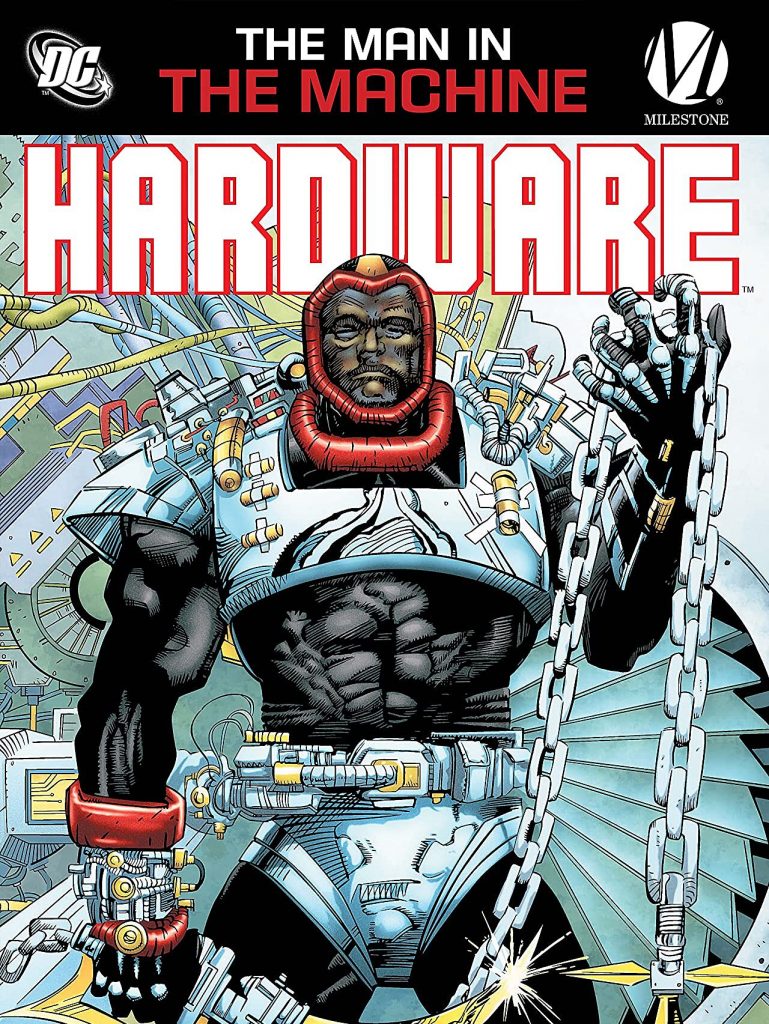
The concept: Hardware is an angry book, a fact that it wears on its sleeve. In the first issue, which is called “Angry Black Man,” we’re introduced to Curtis Metcalf, a brilliant and successful inventor whose world comes crashing down when he discovers his wealthy white benefactor-boss Edwin Alva doesn’t actually value him as a person, has been exploiting him for years, and is enmeshed in a massive criminal conspiracy. Feeling betrayed, Curtis builds a high-tech armored suit and sets off down a ruthless and vengeful quest to take Alva down.
Why you should read it: With its commentary on the exploitation of Black bodies in a capitalist system, Hardware feels just as timely now as it did when it was released over two decades ago. Part of the reason Curtis feels so betrayed by Silva — who took an interest in Curtis from a young age and made sure he attended the best schools — is because he bought into the capitalist myth that success (read: professional accomplishments and wealth) would guarantee his equality and freedom as a Black master. However, that wasn’t enough to protect him from someone who only viewed him as a commodity, and that rude awakening fuels his bloody revenge mission.
Cowan’s art does a remarkable job of capturing the brutality of Hardware’s mission; however, the series doesn’t celebrate the violence. In fact, it interrogates Hardware’s methods, beginning with a very clear analog for the Punisher in the second arc in the collection and climaxing with the very meta issue #8, which dives into Curtis’ guilt-ridden mind and forces him to figure if he can be a force for good and justice without losing himself. It’s truly stunning.
What to look for next: Cowan is teaming up with Bill Sienkiewicz for a six-issue digital-first Hardware series launching Aug. 23. In this updated take on the character, Silva frames Curtis for the aforementioned Big Bang, so Curtis steals his inventions back and becomes Hardware to defend himself.
